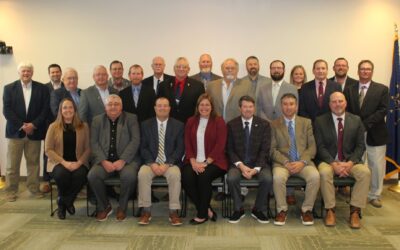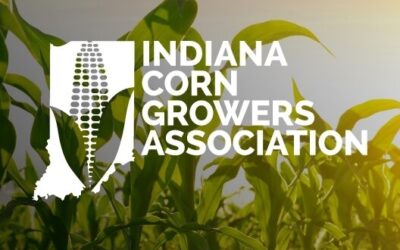Soy Connext 2024 positions Indiana farmers to increase U.S. Soy exports
By Erin Worrell, Communications Manager with U.S. Soybean Export Council
Indiana’s 2024 soybean crop was estimated to be more than 358 million bushels in August, contributing to an expected U.S. Soy crop of 4.6 billion bushels, according to the USDA’s August Crop Production Report. The corresponding World Agricultural Supply and Demand Estimates (WASDE) Report from USDA projects soy supply up 11 percent versus last year.
With this strong crop expected, the U.S. Soybean Export Council (USSEC) hosted Soy Connext 2024, the Global U.S. Soy Summit, in San Francisco, Calif., Aug. 19-21, thanks in part to an Indiana Soybean Alliance sponsorship. The summit convened more than 400 international soy customers from 62 countries including Bangladesh, China, Egypt, Indonesia, Japan, Mexico and more, to learn and network.
Of those customers, 40 percent attended their first Soy Connext. Many of these customers participated in a trade team tour, visiting farms and soy supply chain partners specific to their business before or after Soy Connext.
“Exports help create demand for our soybeans,” said Mike Koehne, a Greensburg, Ind., farmer and ISA director who also serves on the USSEC board and attended Soy Connext 2024. “With so many of our soybeans exported, the work to develop new markets like Morocco or expand existing markets like Malaysia creates opportunities for Indiana farmers.”
Throughout Soy Connext, USSEC tackled tough questions and shared data to elevate a preference for U.S. Soy products among global customers. Speakers and sessions aimed to differentiate the quality and value of U.S. Soy from other nutrition and vegetable oil products. Compared to recent years, current prices allow international customers to benefit from the many advantages of U.S. Soy.
U.S. Soy: A premium product
While soybeans are sold as a commodity oilseed, research continues to show that U.S. Soy is a premium product that increases operational efficiencies for livestock farms, feed mills and oil crushers. It also introduces better flavor profiles in the soy foods sector. And, U.S. Soy has the lowest carbon footprint compared to soy of other origins, thanks to on-farm stewardship and conservation efforts of Indiana soybean farmers and others throughout the United States.
For example, the session on the value of adding U.S. Soy to animal and aqua feeds shared modeling data that quantifies the value of the nutritional package delivered by U.S. Soy as a feed ingredient. Based on current prices, the model showed that U.S. Soy adds $51 per metric ton in nutrient value to fish feed in Indonesia. In Ecuador, the model showed U.S. Soy could add $76 per metric ton in nutrient value to shrimp feed.
“Through USSEC’s work in this area, we are demonstrating that livestock farms and aquaculture operations that use soybean meal from U.S. Soy can unlock more value and profits,” Koehne explained. “Trials are showing that the differences in the amino acid levels found in U.S. Soy can improve feed conversion ratios.”
As it relates to sustainability, the Global Feed LCA Institute’s database indicates an approximate 20 percent reduction in the carbon footprint of feed when meal used in the feed formulation is made from 100 percent U.S. soybeans. During the session on animal and aqua feed, data modeling clearly showed lower greenhouse gas emissions from using U.S. Soy compared to soy of other origins.
Sustainability Assurance Protocol
USSEC developed one of the first sustainability verification schemes, known as the U.S. Soy Sustainability Assurance Protocol (SSAP), and about 70 percent of U.S. Soy exports now carry SSAP certification. The SSAP is an aggregate approach audited by third parties that verifies sustainable soy production at a national scale. The U.S. approach is quantifiable and results-driven with mass balance international verification available.
As of mid-August, international U.S. Soy customers can request that carbon footprint be included on their SSAP certificates. This data, sourced from the Global Feed LCA Institute (GFLI) database, offers a calculation based on the quantity of soy purchased and can be used in their carbon accounting.
Global U.S. Soy customers and supply chain leaders appreciate the knowledge shared at Soy Connext, but they value the unparalleled networking even more. They appreciate connecting with farmers, visiting farms and seeing first-hand the logistics that make U.S. Soy incredibly reliable.
“I had some great conversations during Soy Connext,” Koehne reported. “For example, I talked to several identity preserved, or IP, buyers, since I grow IP soybeans. Demand for IP soybeans is growing, and buyers want high quality, food-grade soybeans. I shared how U.S. farmers can supply it to fill their needs.”
Through Soy Connext 2024, USSEC encouraged international customers to look beyond the status quo to the data that better demonstrates the value of U.S. Soy to learn how to unlock the profit potential it offers. Indiana farmers can expect that to translate to growing export demand in the 2024-25 marketing year and beyond for U.S. soybeans and soybean meal.
Posted: September 18, 2024
Category: Indiana Corn and Soybean Post - September 2024, ISA, News




